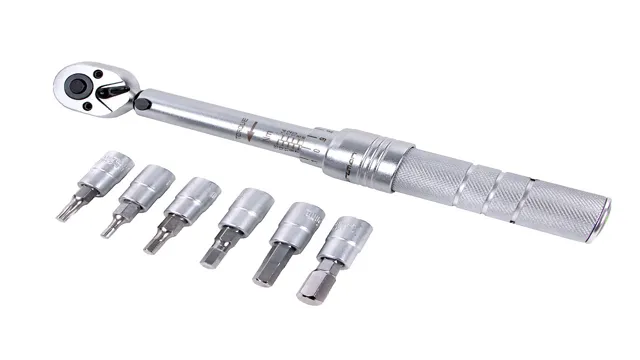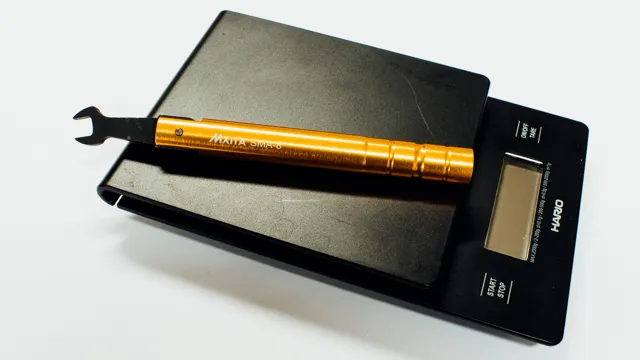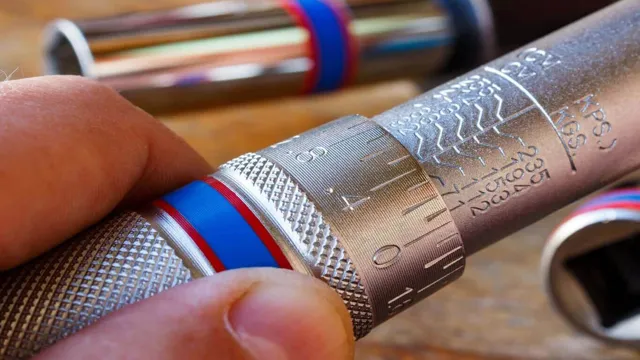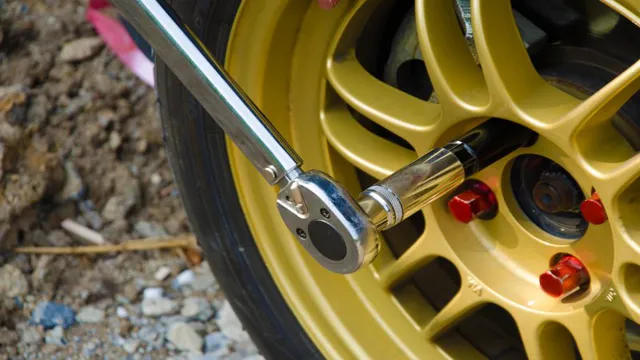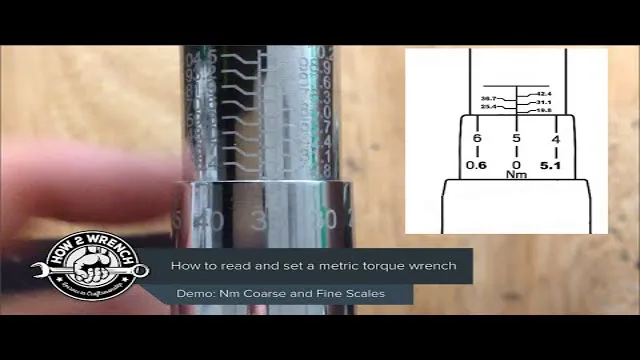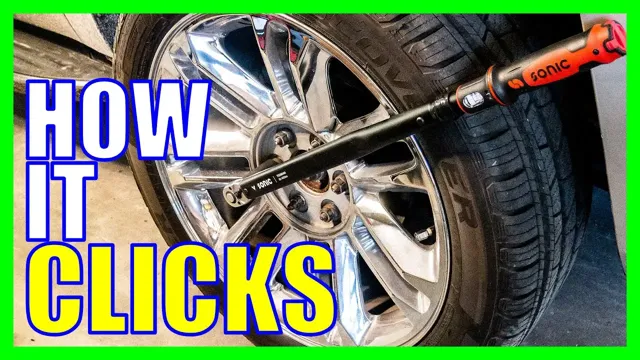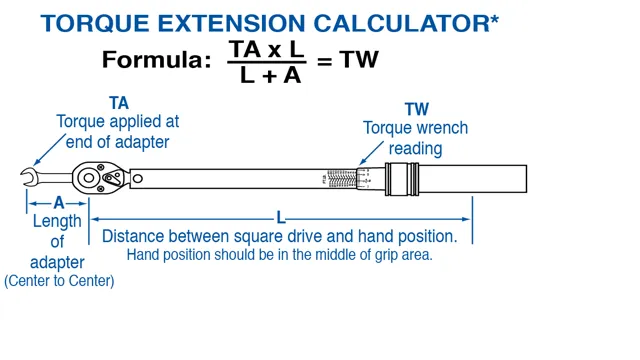How to Use a Pittsburgh Torque Wrench: The Ultimate Guide for Accurate Results
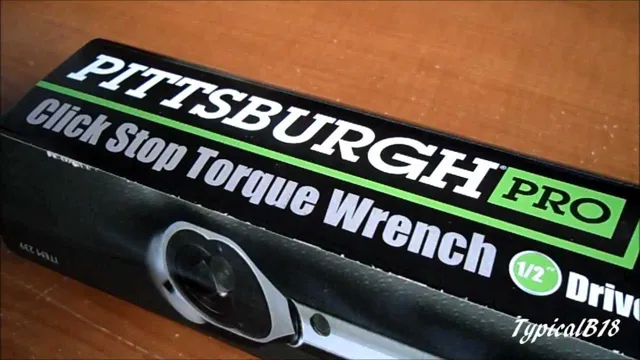
Do you struggle with getting the correct torque on your screws and bolts? Do you find it challenging to determine how much force is enough or too much? The right tool for the job is a torque wrench, and the Pittsburgh Torque Wrench is a popular choice. Whether you’re a professional mechanic or a DIY enthusiast, this versatile tool can help you achieve accurate torque readings on your fasteners. In this blog, we’ll walk you through how to use a Pittsburgh Torque Wrench and give you some helpful tips to make the job easier.
So, let’s get started!
Get Familiar with the Torque Wrench
If you’re new to using a Pittsburgh torque wrench, the process might seem daunting at first. But with a little practice and the right know-how, you’ll soon be able to tackle all sorts of mechanical projects with confidence. First things first, it’s important to choose the right type of torque wrench for the job.
There are several different types to choose from, ranging from beam-style wrenches (which are the least expensive) to digital torque wrenches (which are the most precise). Once you’ve got your wrench, it’s time to get down to business. Start by setting the torque value according to the manufacturer’s specifications.
Then, attach the correct socket or adapter to the wrench and tighten it until it clicks or the indicator reaches the desired torque level. Always use smooth, consistent motions when tightening bolts, and be sure to release the tension slowly to avoid damaging the bolt or surrounding components. With a little practice, you’ll be a torque wrench pro in no time!
Understanding the Scale
When it comes to working on your vehicle or machinery, ensuring that bolts are tightened to the appropriate torque is essential. To achieve this, you’ll need a torque wrench. This tool can help you measure the amount of torque you’re applying to a bolt accurately.
Torque wrenches come in different types, including beam-type, click-type, and digital torque wrenches. While all of them can help you measure torque, the click-type is the most common type due to its simplicity. With this type of wrench, you’ll hear an audible click once you reach the preset torque value, letting you know it’s time to stop tightening the bolt.
To adjust the torque value, all you need to do is turn the handle to the desired setting. Using a torque wrench is crucial to avoid overtightening or undertightening bolts, which can lead to equipment damage, safety concerns, and costly repairs. By getting familiar with a torque wrench, you can ensure that your machinery operates at its optimal level and prolong its lifespan.
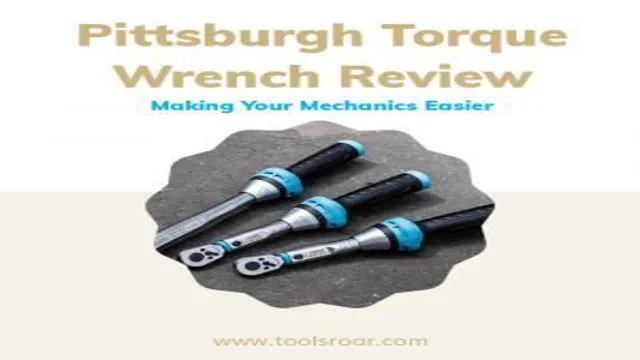
Changing the Units
If you’re working with machinery that requires precise tightening, you’re likely familiar with torque wrenches. These handy tools ensure that bolts and nuts are tightened to the correct level, preventing damage or malfunctions that could be dangerous. But what if you need to change the units on your torque wrench? Luckily, most modern torque wrenches come with easy-to-use settings that allow you to switch between units quickly and easily.
Simply consult your wrench’s manual to learn how to adjust the units, and you’ll be able to work with confidence, knowing that your torque wrench is calibrated correctly. Whether you need to switch from inch-pounds to foot-pounds or from Newton-meters to kilogram-meters, you can do so in just a few easy steps. So don’t let a change in units hold you back – get familiar with your torque wrench’s settings and start tackling your projects with ease.
Preparing for Use
If you’re looking to use a Pittsburgh torque wrench, the first step is to make sure it’s properly calibrated. This means testing it against a known torque value and adjusting it as needed. Once calibrated, you can begin using the wrench to tighten bolts or nuts to specific torque values.
It’s important to use the correct size socket or wrench attachment for the job, and to make sure the bolt or nut is clean and free of debris before tightening. When using the torque wrench, be sure to keep it level and apply force gradually until you reach the desired torque value. It can also be helpful to use a breaker bar to loosen tight bolts before using the torque wrench for tightening.
With practice, you’ll become more comfortable using the Pittsburgh torque wrench and be able to achieve precise torque values with ease.
Selecting the Socket
When it comes to building a computer, choosing the right socket is crucial to ensure compatibility between the CPU and the motherboard. It is important to select a socket that matches the CPU you plan on using. You will want to determine which type of CPU you plan on using before selecting the proper socket.
Intel and AMD are the two main manufacturers of CPUs and have their own sockets for their processors. Additionally, it is important to ensure that the socket you select is compatible with the chipset on your motherboard. When selecting a socket, do your research to ensure that you are choosing the right socket for your desired CPU and motherboard combination.
By choosing the right socket, you can ensure that your computer runs smoothly and efficiently.
Setting the Desired Torque
When preparing to use a torque wrench, the first step is to set the desired torque. This is important because tightening screws or bolts with too little or too much force can lead to serious consequences such as damage to the equipment or even personal injury. To set the desired torque, start by checking the manufacturer’s specifications on the piece of equipment you will be working on.
This information should tell you the appropriate torque setting needed for each screw or bolt. Next, adjust your torque wrench to the appropriate setting. Some torque wrenches will have a digital display, while others may require you to align the scale with a specific mark.
Once you have set the desired torque, you are ready to begin working on the equipment. Always double-check your torque setting before you begin and periodically throughout your work to ensure that you are maintaining the correct torque levels. Remember, precise torque settings are important for ensuring that your equipment functions properly and safely.
Using the Torque Wrench
If you’re wondering how to use a Pittsburgh torque wrench, you’ve come to the right place. The first step is to determine the correct torque for your specific task. This information can usually be found in the owner’s manual for the tool or the item you are working on.
Once you have that information, set the torque wrench to the appropriate level by twisting the handle until the desired torque appears on the scale. When you begin applying force to the item, make sure to keep the wrench perpendicular to the object and apply pressure slowly and evenly. When the wrench reaches the set torque, you’ll hear and feel a click or snap, indicating that you can stop applying pressure.
Remember to release the tension on the wrench and reset the tool before using it again. Using a Pittsburgh torque wrench properly is essential in preventing over-tightening, which can cause expensive and dangerous damage.
Apply Tension
When it comes to applying tension to bolts, the torque wrench is an essential tool in any mechanic’s arsenal. A torque wrench is a measuring instrument used to precisely apply a specific amount of torque or rotational force to a bolt or nut. It is especially important in situations where over-tightening can lead to damage or under-tightening can compromise safety.
With a torque wrench, mechanics can ensure that each bolt is tightened to the manufacturer’s recommended torque specifications, giving them the peace of mind that the job is done right. Using a torque wrench is simple. Just set the torque level on the wrench, place it on the bolt, and tighten it until the wrench clicks or signals that the desired level of torque has been reached.
The best part is that you don’t need to be an experienced mechanic to use a torque wrench; anyone can learn how to use it and apply tension accurately to bolts and nuts.
Listen for Clicks
Using a torque wrench is essential to avoid over-tightening or under-tightening bolts and nuts in mechanical work, but simply using a torque wrench is not enough. It’s important to listen for clicks while using a torque wrench. Torque wrenches make a clicking sound when they reach the desired torque setting that you have set before tightening a bolt or nut.
This click indicates that the desired torque has been achieved and you can stop tightening the bolt or nut. If you continue tightening the bolt or nut after hearing the click, it could lead to over-tightening and damage to the bolt or the equipment. Therefore, paying attention to the clicks while using a torque wrench is crucial for accurate and safe mechanical work.
Release the Tension
If you’re a DIY mechanic or just enjoy working on your car, then one tool that you absolutely need in your arsenal is a torque wrench. A torque wrench is a device that lets you tighten bolts to a specific level of torque. This is especially important when you’re dealing with critical components like engine parts, suspension systems, and wheel lug nuts.
Over- or under-tightening bolts can cause just as many problems as loose bolts, so it’s important to get it right. Using a torque wrench takes the guesswork out of the equation, ensuring that bolts are tightened to a precise level every time. Just set the torque wrench to the desired level, fit it onto the bolt, and turn until you hear a click.
Then you can release the tension knowing that the bolt is tightened to the exact amount necessary to keep everything secure.
After Use Care
Using a Pittsburgh torque wrench is a straightforward process, but it’s essential to know how to take care of it afterward. The first step is to clean the wrench after each use. Use a dry cloth to wipe any dirt and debris that may have accumulated.
You can also use a small amount of oil to lubricate the moving parts of the wrench and prevent corrosion. When storing the wrench, make sure to secure it in a dry and cool place to avoid damage to the tool. Remember to check the settings of the wrench periodically to ensure it will function correctly when in use.
By following these simple steps, you can get the most out of your Pittsburgh torque wrench and extend its lifespan, giving you accurate and reliable results every time.
Conclusion
In conclusion, using a Pittsburgh torque wrench is a lot like using a musical instrument. You need to have the right tools, know the proper technique, and be able to listen for the right notes (or clicks, in this case). It takes practice and patience, but once you master it, you’ll be able to tighten bolts and nuts with precision and finesse.
So, grab your Pittsburgh torque wrench and get ready to make beautiful mechanical music!”
FAQs
What is a Pittsburgh torque wrench?
A Pittsburgh torque wrench is a type of tool used to apply a specific amount of torque to a fastener or bolt.
How do you use a Pittsburgh torque wrench?
To use a Pittsburgh torque wrench, first, select the appropriate torque setting. Then, place the tool on the fastener and tighten until the wrench clicks.
What are the different types of Pittsburgh torque wrenches?
Pittsburgh torque wrenches come in different types, including beam-style, click-style, and digital.
What is the accuracy of a Pittsburgh torque wrench?
The accuracy of a Pittsburgh torque wrench can vary depending on the model and manufacturer. Generally, they have an accuracy range of +/- 4%.
How often should I calibrate my Pittsburgh torque wrench?
It is recommended to calibrate Pittsburgh torque wrenches at least once a year or every 5,000 uses, whichever comes first.
Can a Pittsburgh torque wrench be used on both left and right-handed fasteners?
Yes, some Pittsburgh torque wrenches can be used on both left and right-handed fasteners.
How do I properly store my Pittsburgh torque wrench?
To properly store your Pittsburgh torque wrench, keep it in a dry place and store it in its case or in a clean area away from other tools and equipment.

